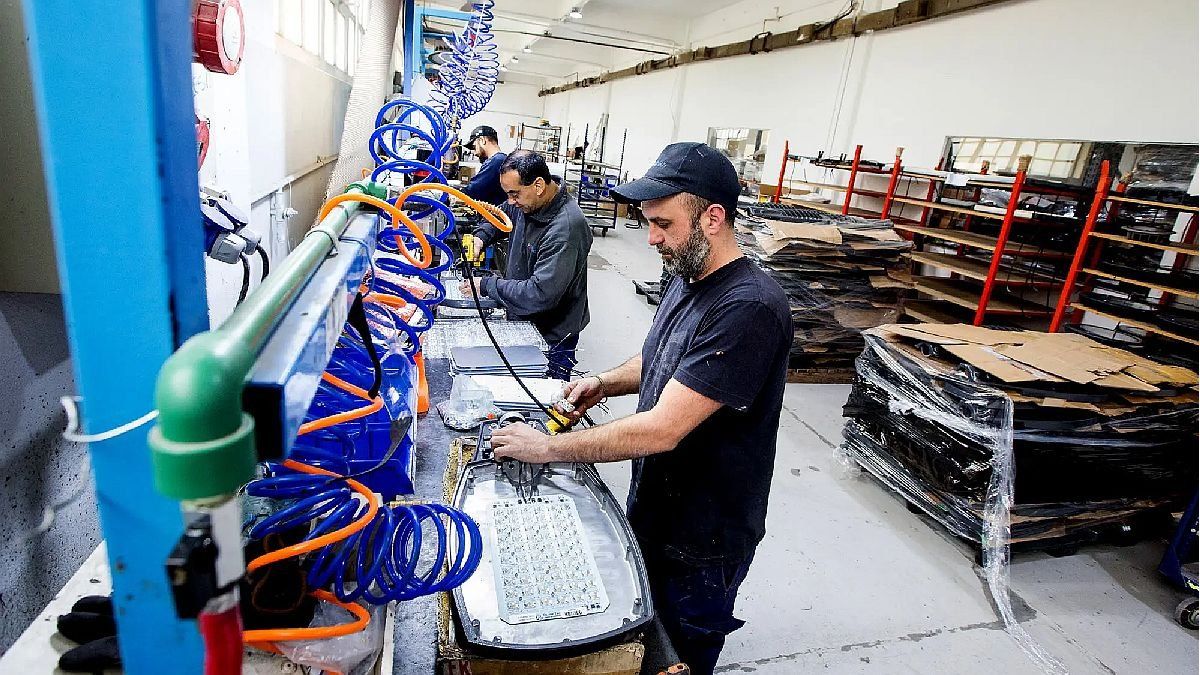According to CAME, “the uncertainty in the markets, the rumors of devaluation, the increase in prices, the delays in deliveries and the lack of stock of some inputs, complicated production for the companies. There were no problems with demand, the consumption remained firm throughout the month, but the complications of the SME industry were fundamentally related to production”.
“The first semester closes with sustained growth, slowed down in the last month. However, the difficulties in terms of costs, diesel, supplies, logistics and foreign exchange restrictions to import supplies raise a question mark regarding the potential growth of production in the second half of the year,” they said.
62dd36e6532e7_706x387.jpg
Analysis by sectors
The best performance in June was in the industrial branch linked to Chemical products and plastic manufactures, with an annual increase of 9.5%. The worst happened in Textiles and clothing with a new annual drop of 6.9%.
1) Food and drinks: Production rose 2.5% annually and 2.4% monthly in June. The reality of each company was completely different depending on the type of production, geographical location, or position in terms of accumulation of inputs and stocks. Companies located in border cities benefited greatly from orders from neighboring countries.
2) Clothing and textiles. Production fell 6.9% annually in June and was down 8.5% in the monthly comparison. It was a very difficult month due to the increase in supplies, the lack of products such as fabrics, dyes, threads, and the speculation of some suppliers on prices and deliveries. “There were constant increases from suppliers in raw materials, all month,” complained a producer of ushuaiain Land of Fire.
But the reality was very different. “It went well for us and without supply problems, the import of propylene from Brazil entered without difficulties and 7% of non-woven fabrics, which is the main product we manufacture, are normally exported to the same country,” explained a manufacturer. of King’s Passin Buenos Aires province. Instead, from Santa Rosa, The Pampa they presented another reality: “these months were very bad, the fabric increased 30% and we were only able to move 10%, we are going to crash at any moment like this”.
3) Wood and Furniture. In June, production fell 0.4% annually and rose 0.4% monthly. “In terms of volume, production remained the same as last year, but there was a considerable increase in the prices of inputs and we did not transfer everything,” explained a producer from the capital of Cordova. “We are doing well because we made new investments, not because the context helps, the context makes everything increasingly difficult,” explained a manufacturer from the city of San Benitoin Between rivers.
4) Metallic, machinery, equipment and transport material. Production rose 5.1% annually in June, but fell 1.7% in the monthly comparison. The sector produced well. There was a lot of “stocking” by some companies demanding capital goods, added to investments in agriculture, public works that are pushing and industry in general that also continued to push even with the uncertainty of the month. But the sector was not immune to the general bottlenecks that the industry is experiencing.
5) Chemicals and plastics. In June, production rose 9.5% annually and 5.6% monthly. “We are doing very well, but I don’t know if we will be able to buy supplies in the coming months, because most are in dollars,” warned a producer from the city of Santa Fe. “In June, the levels of production and sales were very good, but as of July the macroeconomic context hurt us a lot because we cannot buy imported raw materials, we cannot enter machinery that we had acquired to increase installed capacity, we cannot make payments abroad, and the suppliers are not delivering merchandise to us nor do they have a price”, summed up an industrial SME from the city of White Bayinside the Buenos Aires province.
6) Paper, cardboard, editing and printing. Production in June fell 3.7% annually and was also down 5.6% monthly. Problems continued to obtain inputs such as paper, chemicals, and inks, and the industry was also inconvenienced by the permanent rises in prices. “A sector of our printing company could not produce in June due to lack of paper and that is why we lost sales,” complained a producer from the city of Santiago del Estero.
Source: Ambito
David William is a talented author who has made a name for himself in the world of writing. He is a professional author who writes on a wide range of topics, from general interest to opinion news. David is currently working as a writer at 24 hours worlds where he brings his unique perspective and in-depth research to his articles, making them both informative and engaging.




